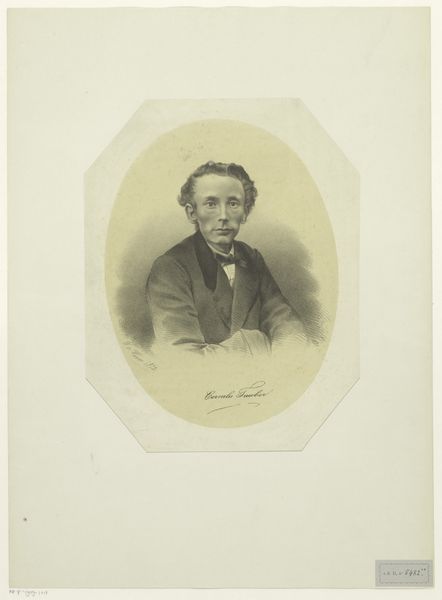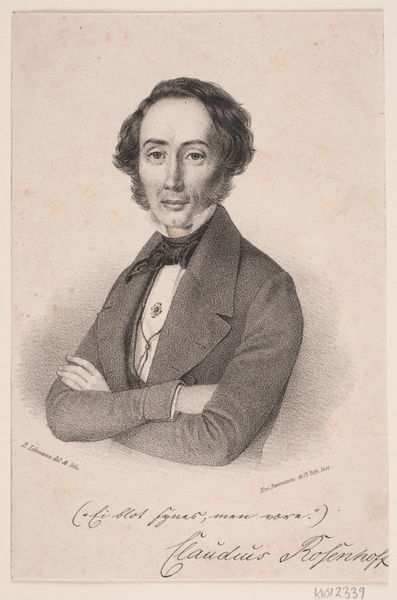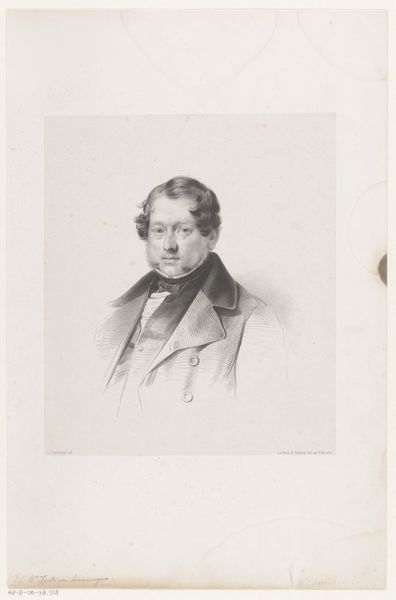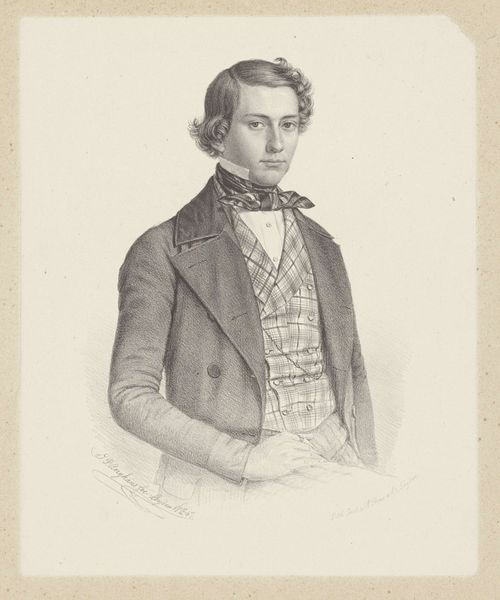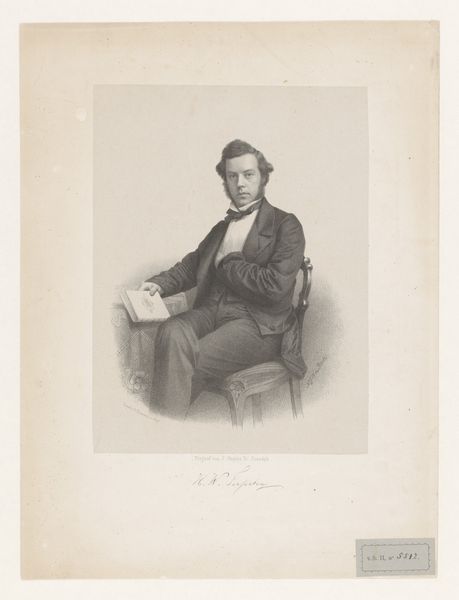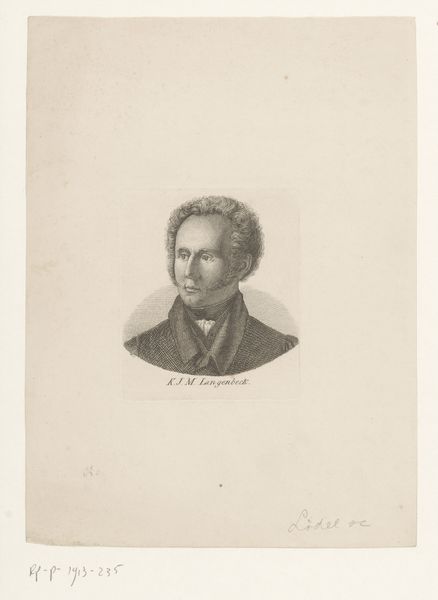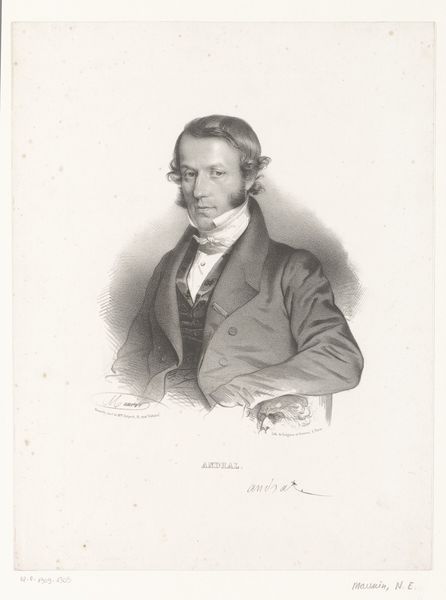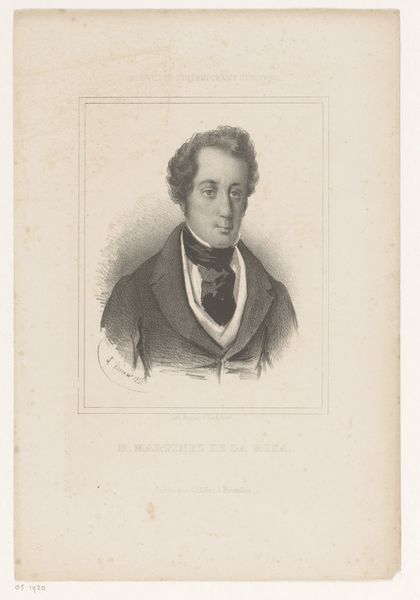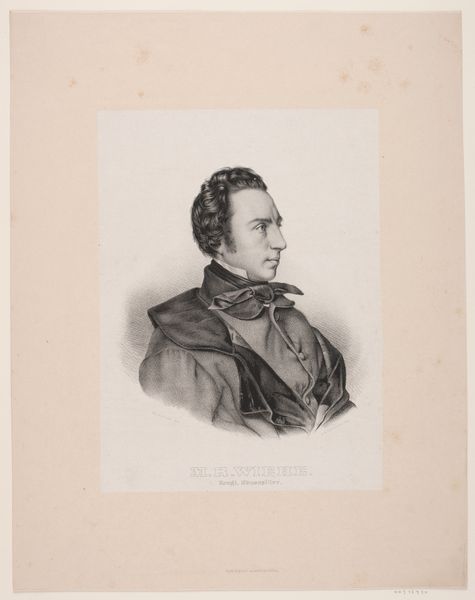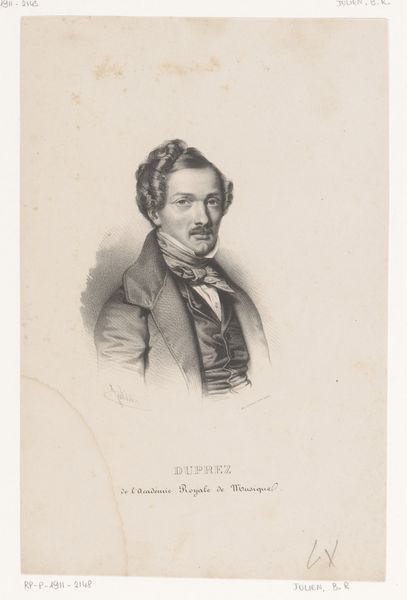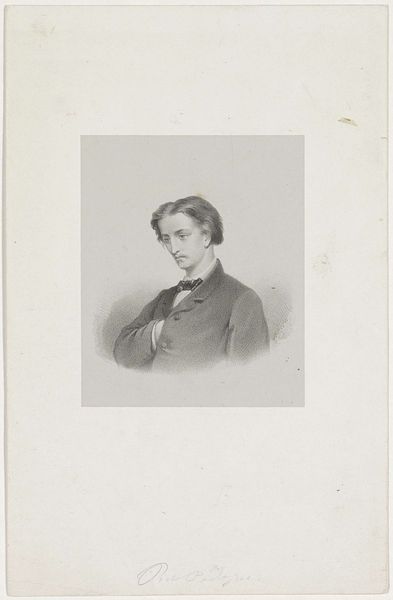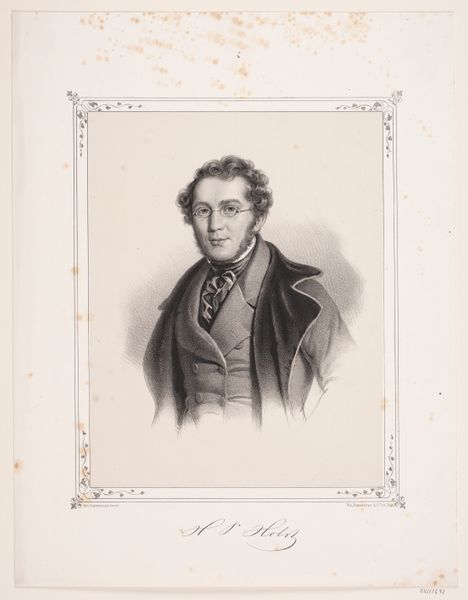
drawing, pencil
#
portrait
#
pencil drawn
#
drawing
#
pencil sketch
#
caricature
#
pencil drawing
#
pencil
#
portrait drawing
#
academic-art
#
realism
Dimensions: height 361 mm, width 264 mm
Copyright: Rijks Museum: Open Domain
Curator: Here we have "Portret van meneer Herse," a portrait created sometime between 1840 and 1861 by Josef Resch. The artist employed pencil to capture the likeness of his sitter. Editor: The softness of the pencil work creates an interesting contrast with the subject’s somewhat stern expression and formal attire. It gives a very gentle aura to the image. Curator: This drawing speaks volumes about the rising importance of the middle class. Portraiture had traditionally been a preserve of the aristocracy. What do you make of it? Editor: I'm struck by the technique, you see how the density of the lines varies across the portrait? Look at how the artist renders the folds of his clothing, paying such close attention to the drape and fall of the fabric – you can tell a lot about the man by what he wears. This is more than just a surface representation. Curator: Indeed. The meticulous detailing in his coat and the slightly theatrical bow at his neck point towards an emerging class striving for social recognition and a certain status. It signifies wealth accumulation through industry. The ring also adds a symbol of status, maybe of recent elevation. Editor: There's a deliberate attention to detail here, particularly with the texture and rendering of the man’s garments that seems particularly intentional and relevant. Think about the rise of textile production at this time and its role in industrializing society. The way this drawing celebrates these fabrics almost becomes part of a collective biography. Curator: And it showcases how art became entwined with those societal shifts. Resch was not simply portraying an individual but capturing a moment of social transition through this one image. Editor: Absolutely. This detailed record-keeping within artistic practices, where materials are treated not merely as elements within a picture but as vital reflections of cultural narrative and manufacturing change, is significant to the comprehension of nineteenth-century identity. Curator: Precisely, looking beyond the artistic merit to see the intricate relationship between material culture, portraiture, and the public sphere, lets us consider the piece more fully. Thank you for that. Editor: It's been my pleasure, considering artistic works like this opens avenues for seeing them less as aesthetic endpoints and more as integral parts of comprehensive societal dialogues concerning labor and capital.
Comments
No comments
Be the first to comment and join the conversation on the ultimate creative platform.
